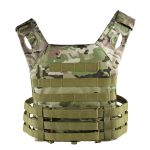
Pictures: Tactical Armor Plate Carrier
Made by polyester 600D, adjustable one size fit all, weight around 0.8kg/pc
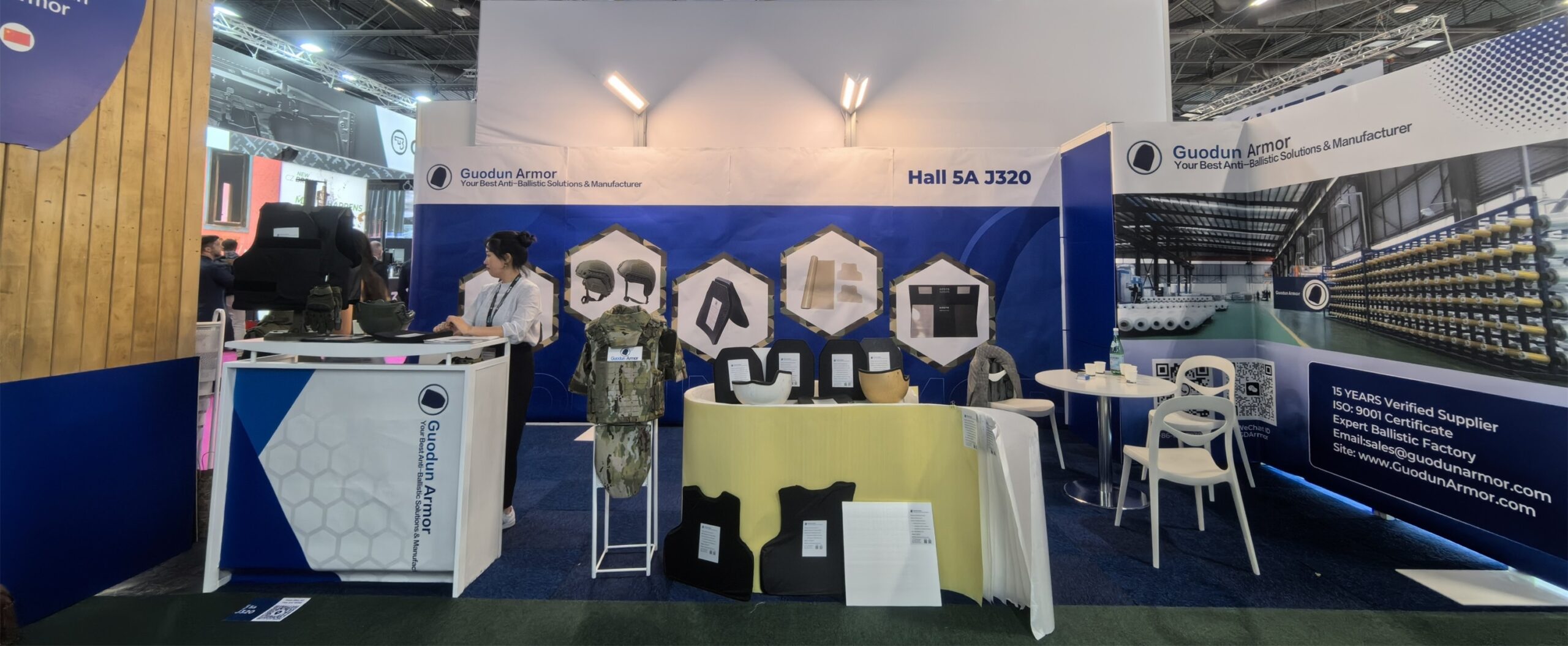
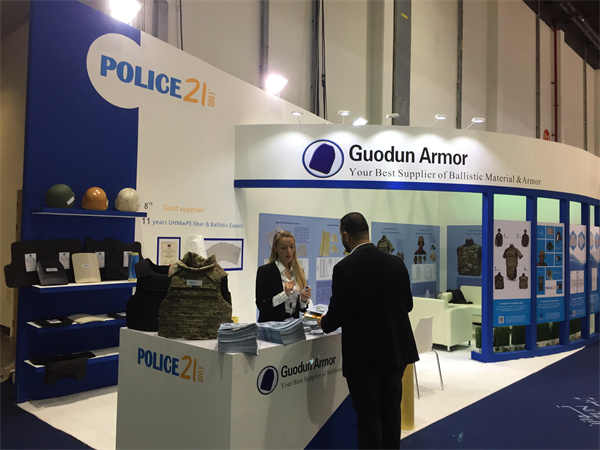

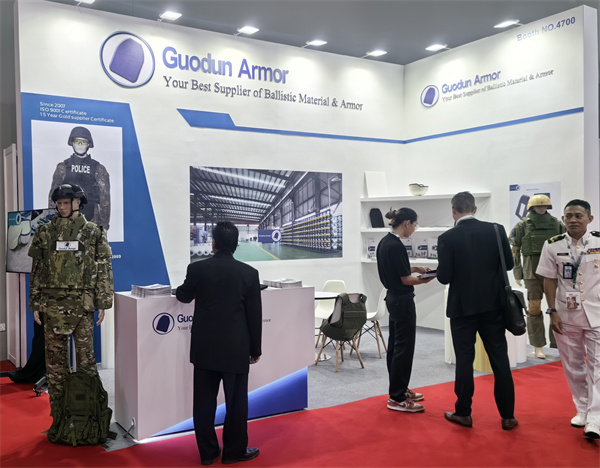


Made by polyester 600D, adjustable one size fit all, weight around 0.8kg/pc

How to measure soft armor panel size to make body armor vest by us? Our OEM bulletproof vest makes according to customize draw and its size chart. It is required to submit values from A to M of each size before ordering. How to choice size for end users of bulletproof vest? Style of Guodun Armor bulletproof vests Protect area of Guodun Armor bulletproof vests Reference weight of Guodun Armor bulletproof vests
NIJ standard 0101.06 Personal body armor covered by this standard is classified into five types (IIA, II, IIIA, III, IV) by the level of ballistic performance. In addition, a special test class is defined to allow armor to be validated against threats that may not be covered by the five standard classes. The classification of an armor panel that provides two or more levels of NIJ ballistic protection at different locations on the ballistic panel shall be that of the minimum ballistic protection provided at any location on the panel. NIJ BODY ARMOR CLASSIFICATION NIJ 0101.06 type IIA (9 mm; .40 S&W) armor that is new and unworn shall be tested with 9 mm Full Metal Jacketed Round Nose (FMJ RN) bullets with a specified mass of 8.0 g (124 gr) and a velocity of 373 m/s ± 9.1 m/s (1225 ft/s ± 30 ft/s) and with .40 S&W Full Metal Jacketed (FMJ) bullets with a specified mass of 11.7 g (180 gr) and a velocity of 352 m/s ± 9.1 m/s (1155 ft/s ± 30 ft/s). NIJ 0101.06 type II (9 mm; .357 Magnum) armor that is new and unworn shall be tested with 9 mm FMJ RN bullets with a specified mass of 8.0 g (124 gr) and a velocity of 398 m/s ± 9.1 m/s (1305 ft/s ± 30 ft/s) and with .357 Magnum Jacketed Soft Point (JSP) bullets with a specified mass of 10.2 g (158 gr) and a velocity of 436 m/s ± 9.1 m/s (1430 ft/s ± 30 ft/s). NIJ 0101.06 type IIIA (.357 SIG; .44 Magnum) armor that is new and unworn shall be tested with .357 SIG FMJ Flat Nose (FN) bullets with a specified mass of 8.1 g (125 gr) and a velocity of 448 m/s ± 9.1 m/s (1470ft/s ±
NIJ Standard 0101.07 Ballistic Resistance of Body Armor DRAFT FOR PUBLIC COMMENT by National Institute of Justice in January 2018 The Next Revision of the NIJ Performance Standard for Ballistic Resistance of Body Armor in October 2018 Ballistic Protect Levels of NIJ 0101.07 NIJ HG Threat Level Test Threat Ammunition Reference Velocity Compare to NIJ 0101.06 NIJ 0101.07 HG1 9mm Luger full metal jacketed (FMJ) round nose (RN) 124 grain 1305 ft/s (398 m/s) Formerly NIJ 0101.06 Level II .357 Mag jacketed soft point (JSP) 158 grain 1430 ft/s (436 m/s) Formerly NIJ 0101.06 Level II NIJ 0101.07 HG2 9mm Luger FMJ RN 124 grain 1470 ft/s (448 m/s) Formerly NIJ 0101.06 Level IIIA .44 MAG jacketed hollow point (JHP) 240 grain 1430 ft/s (436 m/s) Formerly NIJ 0101.06 Level IIIA NIJ RF Threat Level Test Threat Ammunition Reference Velocity Compare to NIJ 0101.06 NIJ 0101.07 RF1 7.62x51mm M80 Ball NATO FMJ steel jacketed spire point boat tail (BT) 149 +0/-3 grain 2780 ft/s (847 m/s) NIJ 0101.06 Level III NIJ 0101.07 RF1 7.62x39mm surrogate test round 120.5 grain (7.81 g) 2380 ft/s (725 m/s) NIJ 0101.07 RF1 5.56mm M193 BT 56 +0/-2 grain 3250 ft/s (990 m/s) NIJ 0101.07 RF2 7.62x51mm M80 Ball NATO FMJ steel jacketed spire point BT 149 +0/-3 grain 2780 ft/s (847 m/s) Same as RF1 NIJ 0101.07 RF2 7.62x39mm surrogate test round 120.5 grain (7.81 g) 2380 ft/s (725 m/s) Same as RF1 NIJ 0101.07 RF2 5.56mm M193 BT 56 +0/-2 grain 3250 ft/s (990 m/s) Same as RF1 NIJ 0101.07 RF2 5.56mm M855 BT 61.8 ± 1.5 grain 3115 ft/s (950 m/s) Add M855 on RF1 NIJ 0101.07 RF3 30.06 M2 Armor Piercing (AP) FMJ spire point AP 165.7 +0/-7 grain 2880 ft/s (878 m/s) Formerly NIJ 0101.06 Level IV
The UHMWPE fiber (Ultra High Molecular Weight Polyethylene Yarn) is 15 times stronger than steel and 40% stronger than aramid when weight for weight basis. It is the strongest yarn today for making cut-resistance gloves, high-strength ropes, and bulletproof fabrics. Its tenacity at breaking up to 45cN/dtex and has good performance on anti-UV, anti-chemicals, and anti-cut. Introduce of Ultra High Molecular Weight Polyethylene Yarn Ultra-high-molecular-weight polyethylene (UHMWPE fiber) is a subset of thermoplastic polyethylene. Also known as high-modulus polyethylene (HMPE yarn), it has extremely long chains, with a molecular mass usually between 3.5 and 7.5 million annually. The longer chain serves to transfer load more effectively to the polymer backbone by strengthening intermolecular interactions. This results in a very tough material, with the highest impact strength of any thermoplastic presently made. UHMWPE fiber is odorless, tasteless, and nontoxic. It embodies all the characteristics of high-density polyethylene (HDPE) with the added traits of being resistant to concentrated acids and alkalis, as well as numerous organic solvents. It is highly resistant to corrosive chemicals except for oxidizing acids; has extremely low moisture absorption and a very low coefficient of friction; is self-lubricating (see boundary lubrication); and is highly resistant to abrasion, in some forms being 15 times more resistant to abrasion than carbon steel. Its coefficient of friction is significantly lower than that of nylon and acetal and is comparable to that of polytetrafluoroethylene (PTFE, Teflon), but UHMWPE fiber has better abrasion resistance than PTFE. UHMWPE yarn is also one of three major hi-tech fibers ( specifically the carbon fiber, aramid, and UHMWPE fiber), in addition, it is a super-strong polyethylene fiber that offers maximum strength combined with minimum weight. It is up to 15 times stronger than quality steel and up to 40% stronger than aramid fibers, both on weight for weight basis. UHMWPE
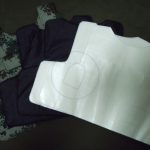
A bulletproof vest, also known as a ballistic vest or body armor, is a type of protective clothing designed to absorb and reduce the impact of bullets and other projectiles to minimize injury to the wearer. These vests are commonly worn by military personnel, law enforcement officers, security guards, and individuals in high-risk professions where firearms may be encountered. Bulletproof vests are typically made of multiple layers of specialized materials, such as Kevlar®, Dyneema®, or other high-strength synthetic fibers. These materials are woven or layered together to create a strong and flexible barrier that can withstand the force of bullets. The effectiveness of a bulletproof vest depends on its design, the quality of materials used, and the specific threat level it is designed to protect against. Bulletproof vests are available in various levels of protection, which are typically categorized by the type of ammunition they can withstand. These levels are established by organizations like the National Institute of Justice (NIJ) in the United States and range from Level IIA (designed to stop lower-velocity handgun rounds) to Level IV (designed to stop high-velocity rifle rounds). Higher-level vests offer greater protection but may also be heavier and less flexible. It’s important to note that while bulletproof vests can provide substantial protection against firearms, they are not entirely “bulletproof.” There are limitations to their effectiveness, and they may not protect against certain types of ammunition, close-range shots, or shots to unprotected areas of the body. Moreover, no protective gear can guarantee complete safety, and the effectiveness of a vest may degrade over time or with wear and tear. The use of bulletproof vests is an important safety measure for individuals facing potential firearm threats, and their design and technology continue to evolve to enhance protection while maintaining comfort and flexibility for the wearer.
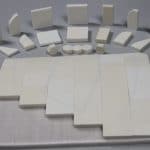
The bulletproof plate is part of the high protection of body armor required to meet NIJ standard level III or IV. It means required to against rifle or high power bullets like 7.62x51mm NATO ball, 7.62x39mm AK47 MSC, 5.56x45mm SS109, .30 M2 AP, or similar. The soft armor vest always designed for handguns so, it required the bulletproof plate together. The bulletproof plate is rigid with the single or multi-curve. It calls a hard armor panel (HAP) or SAPI or ESAPI. And it always uses two pieces per body armor at the front and back to protect major organs of the body. To make one bulletproof plate, required to follow steps and it also suitable for making a bulletproof shield or armored vehicle panel. Step 1: Choose structure of bulletproof plate Regular has two structures of the bulletproof plate in the market today. One is pure PE and another is with ceramics. That has steel plate before but not use too much today because of too heavy. Pure PE only suitable for NIJ level III, III+ or RF1 up to RF2 plate The ceramic plate can use for all protect levels including level III up to IV / RF3 Step 2: Choose ceramic if required That has three types of ceramic canbe use in market today. >99% Alumina Oxide (Al2O3) Ceramic: weight ~3.9kg/mm, cheaper but heavy >85% Silicon Carbide (SiC) Ceramic: weight ~3.2kg/mm, competitive >85% Boron Carbide (B4C) Ceramic: weight ~2.2kg/mm, lightweight but expensive Alumina Oxide is a very low-cost solution today but silicon carbide is more welcome because of its lightweight. Boron carbide will be more use in future but its cost too high today. And for the ceramic, that has hexagon tiles, square tiles, or monolithic to choose from in the market. It is depending on the cost

The bulletproof fabric is made from high-strength UHMWPE fiber with a Uni-Directional (UD) structure. The high-strength UHMWPE fiber has good performance when against the impact of the high velocity of bullets and, the UD structure can transfers the power quickly than women fabric in a short time. Step 1: Choose UHMWPE fiber or Aramid Fiber That has much fiber that can make bulletproof fabric. The Aramid fiber and UHMWPE fiber is the popular fiber today in the world. The tenacity of aramid fiber has ~22cN/dtex and for the UHMWPE fiber, the tenacity over 36cN/dtex today, which has over 40% stronger than aramid fiber. The well known main difference between aramid and UHMWPE fiber are: UHMWPE fiber is stronger and lightweight than aramid fiber Aramid fiber can heat higher temperature up to 500 degrees For more information, please see What is Ultra High Molecular Weight Polyethylene Yarn? and What is Aramid Fiber? Step 2: Choose Uni-Directional (UD) or Woven Structure The Uni-Directional structure is the fiber layer as 0/90 or 0/90/0/90 or 0/90/0/90/0/90 or more times. All fiber has no cross. The UD structure has fast transfer when the fiber heat high power impact so, it is better than woven structure as we knew. The woven structure is classic plain or similar which is easy to make by weaving machines. for more information, please see what is a uni-directional (UD) structure? Step 3: Use Right Resin The resin is the main material except for the fiber. It is very important for high-performance bulletproof fabric. It cannot order directly from outsourcing so, it always develops by engineers. Step 4: Use Professional Machine It just needs one professional machine to make bulletproof fabric after decided fiber and structure. The machine can spread evenly fiber on special film and fix with resin and then, laminated each

Hand glove size is refer to United State of American and European standards. It is for people measure hand circumference and palm length to decide which size glove suitable for your hand.